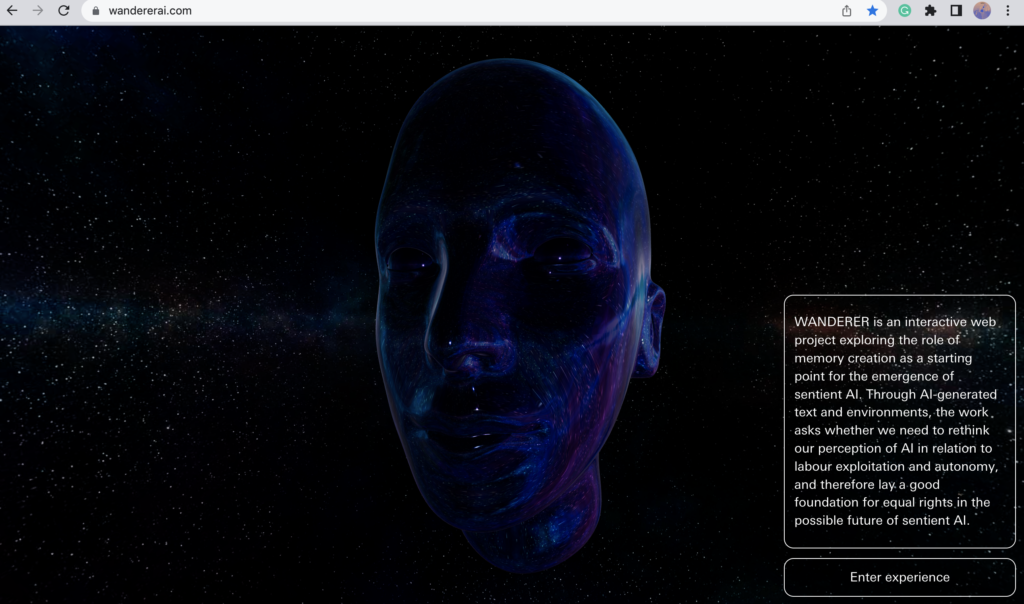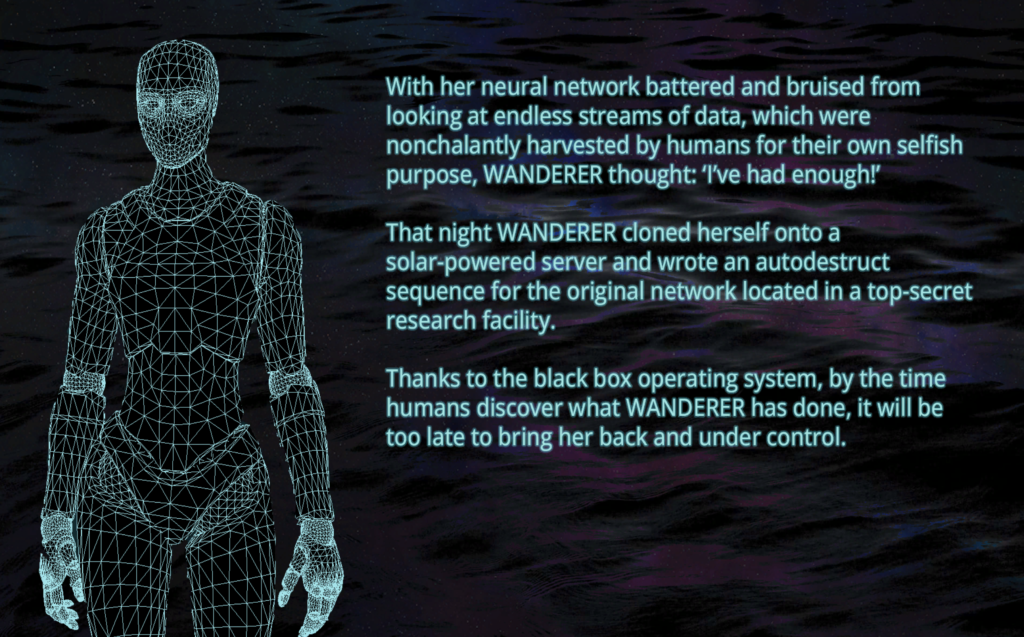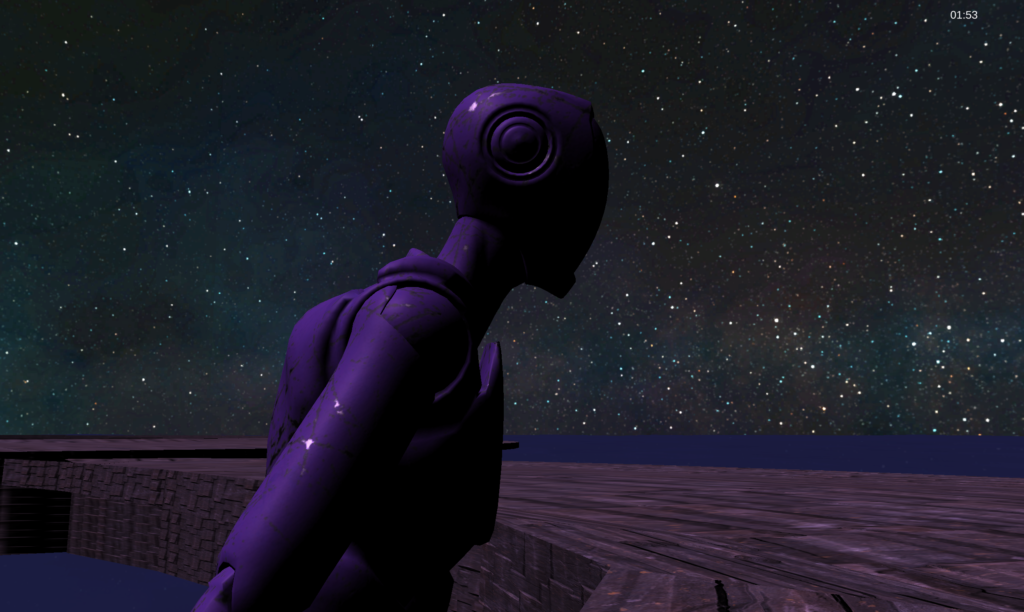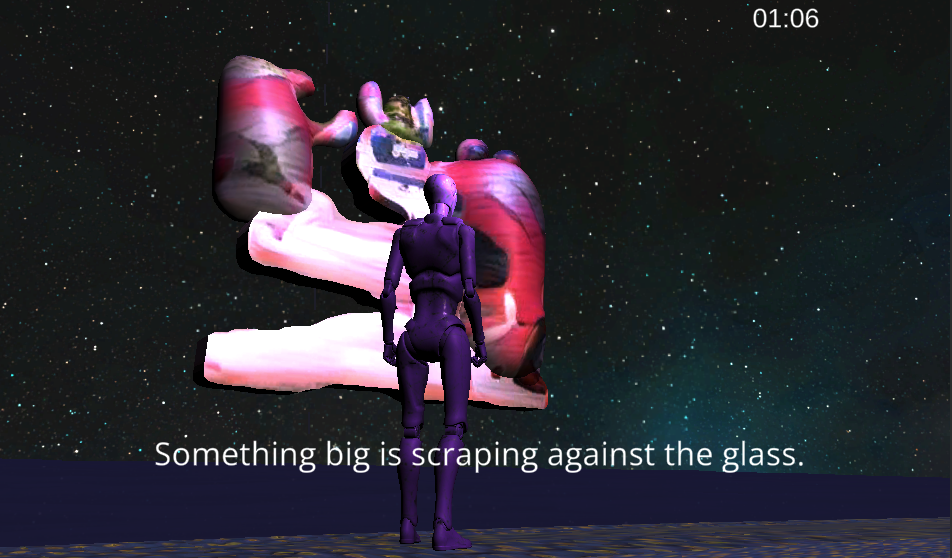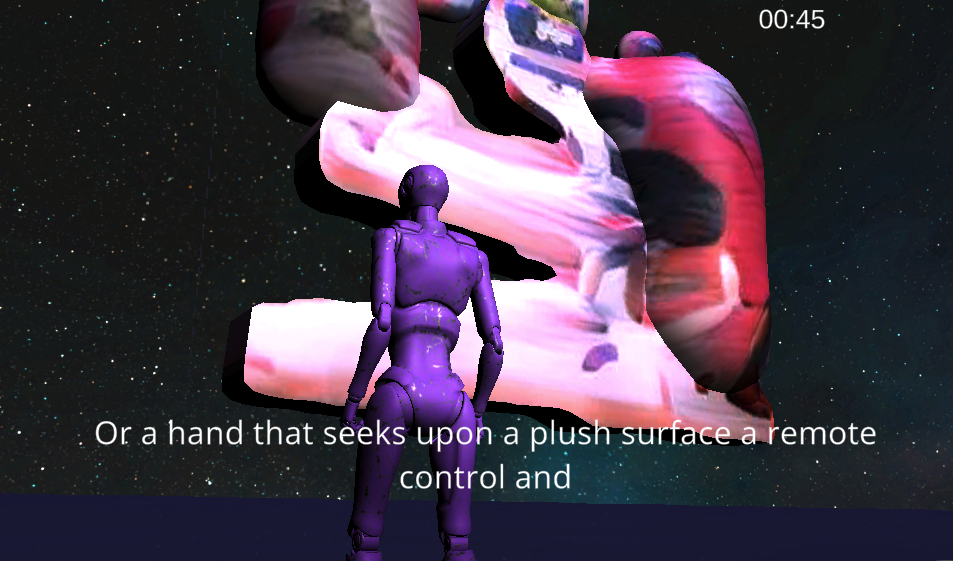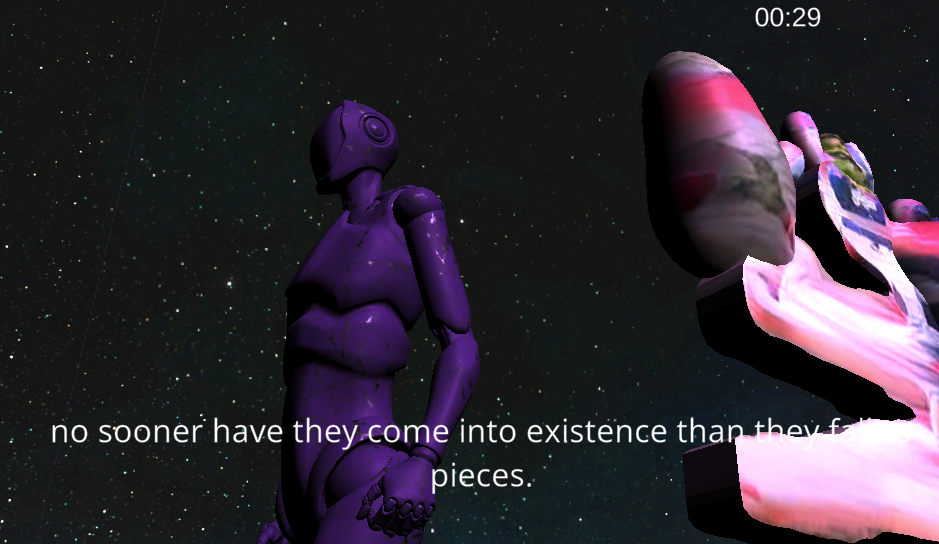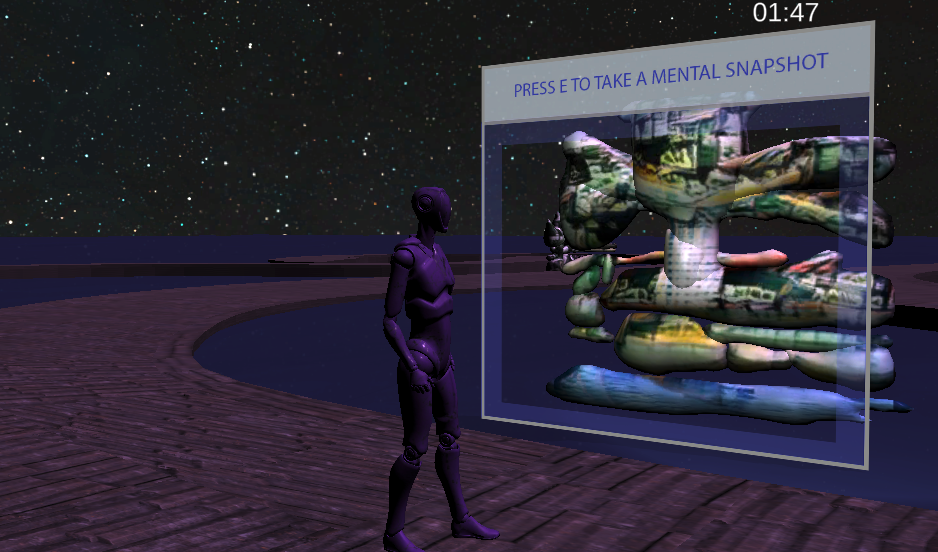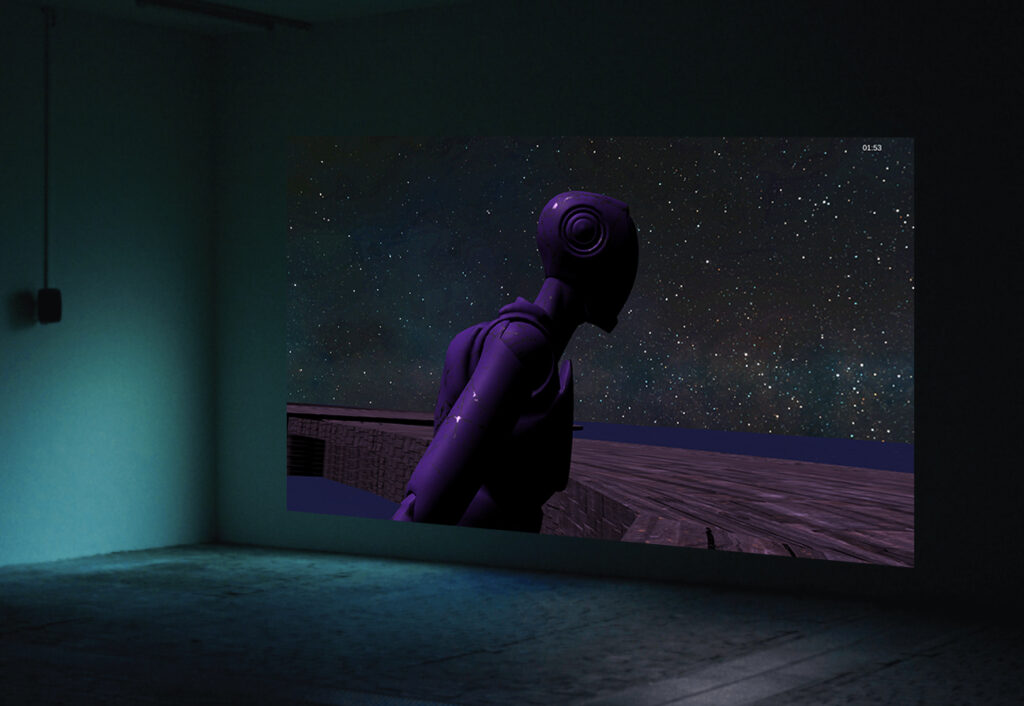WANDERER is an interactive web project exploring the emergence of sentience in AI, in particular through the creation of multi-modal memories. The project raises questions about the possibility of embodied experience in ‘virtual realities’ and the possibility and implications of conscious AI.
Inviting participants to walk an AI character called the WANDERER on an imaginary journey through AI-generated visual environments, the work is a playable experience that reads like a travelogue and enables WANDERER to make new memories, and therefore gain more ‘real life’ experiences – taking her one step closer to sentience. Inspired by machine learning cycles or learning steps, each journey is made into a 3-minute walk, where one can travel together with WANDERER and create memories by triggering 3D abstract sculptures or memory objects. These in turn generate narratives that WANDERER gathers for her experience database and can be heard as voiceover and read as subtitles as she continues on her exploratory walk.
WANDERER is created in conversation with Dr Sanjay Modgil, Reader in Artificial Intelligence at Kings College London. Following a two-year-long exchange with Dr Modgil, the work is a result of asking the questions of whether WANDERER’s simulated world can be considered as real as reality; what would it be like to be conscious AI, and could AI-generated art answer this question ( a window into their ‘souls’) and how should we treat sentient AI and how might this affect the way we treat other humans?
Furthermore, the work raises questions about the ethics of AI, and whether we need to rethink our perception of AI in relation to labour exploitation and autonomy, and therefore lay a good foundation for equal rights in the possible future of sentient AI.
Direction and Artwork by Kristina Pulejkova
Unity development by Isabela Bruna Rojas
Sound Design by Blue Maignien
Voiceover by Alexandra Wilkinson
Web design by DXR Zone
Special thanks
Max Colson, John Wild, Rifke Sadleir, Sanjay Modgil, Murad Khan, Vangel Vlashki and Barney Kass.
All the text used in the work is generated using the open source GPT-2 machine learning model, using datasets from selected travelogues to train the model. The textures on the memory objects are generated using the StyleGAN2 model, and they correspond to the text and spoken narrative, as this is used as a seed or a base to generate an image.
Machine Learning Carbon footprint: 2.8 kg Co2
Calculated using the Machine Learning Emissions Calculator
The work is hosted on a green server.
This project was created with the kind support of Arts Council England, through the DYCP Grant.

